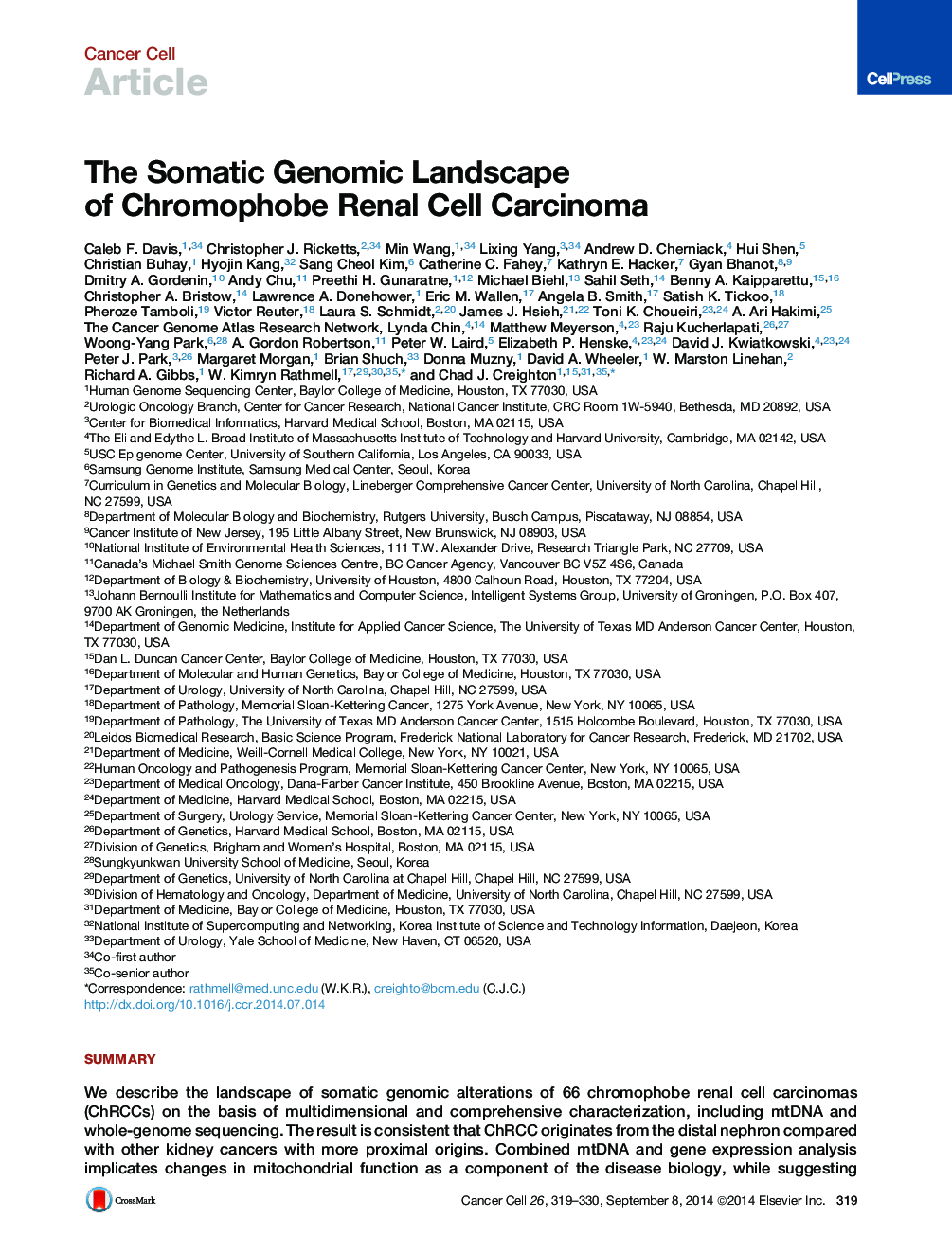| Article ID | Journal | Published Year | Pages | File Type |
|---|---|---|---|---|
| 2106982 | Cancer Cell | 2014 | 12 Pages |
•Comprehensive molecular analysis is performed on 66 kidney chromophobe cases•Global molecular patterns provide clues as to this cancer’s cell of origin•mtDNA sequencing reveals loss-of-function mutations in NADH dehydrogenase subunits•Genomic structural rearrangements involving TERT promoter region are assessed
SummaryWe describe the landscape of somatic genomic alterations of 66 chromophobe renal cell carcinomas (ChRCCs) on the basis of multidimensional and comprehensive characterization, including mtDNA and whole-genome sequencing. The result is consistent that ChRCC originates from the distal nephron compared with other kidney cancers with more proximal origins. Combined mtDNA and gene expression analysis implicates changes in mitochondrial function as a component of the disease biology, while suggesting alternative roles for mtDNA mutations in cancers relying on oxidative phosphorylation. Genomic rearrangements lead to recurrent structural breakpoints within TERT promoter region, which correlates with highly elevated TERT expression and manifestation of kataegis, representing a mechanism of TERT upregulation in cancer distinct from previously observed amplifications and point mutations.
